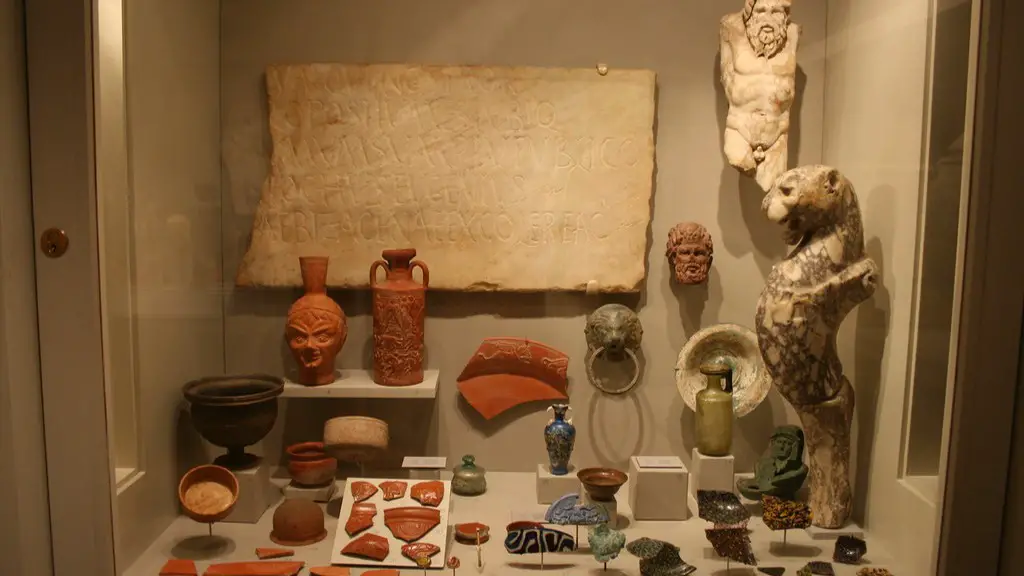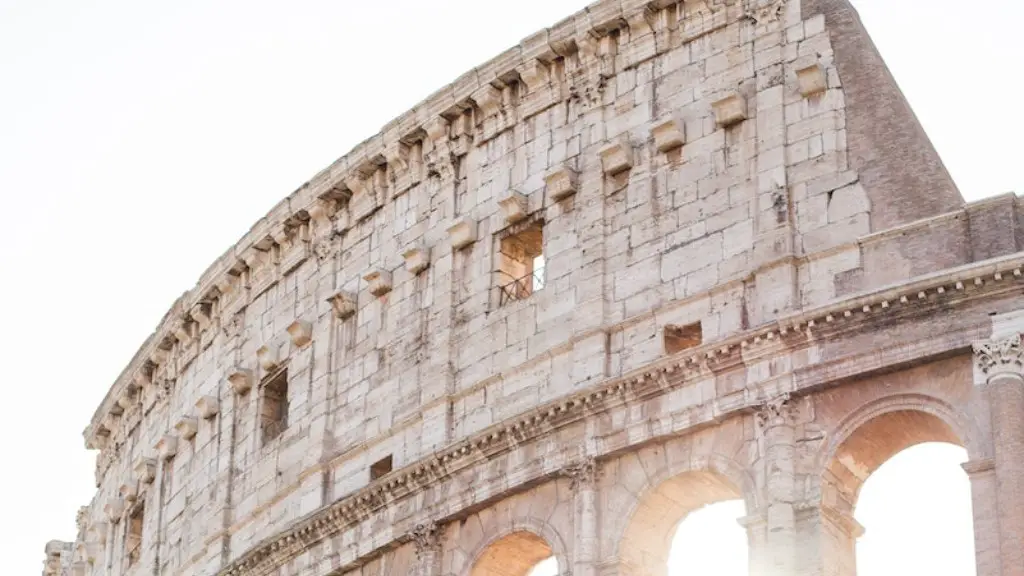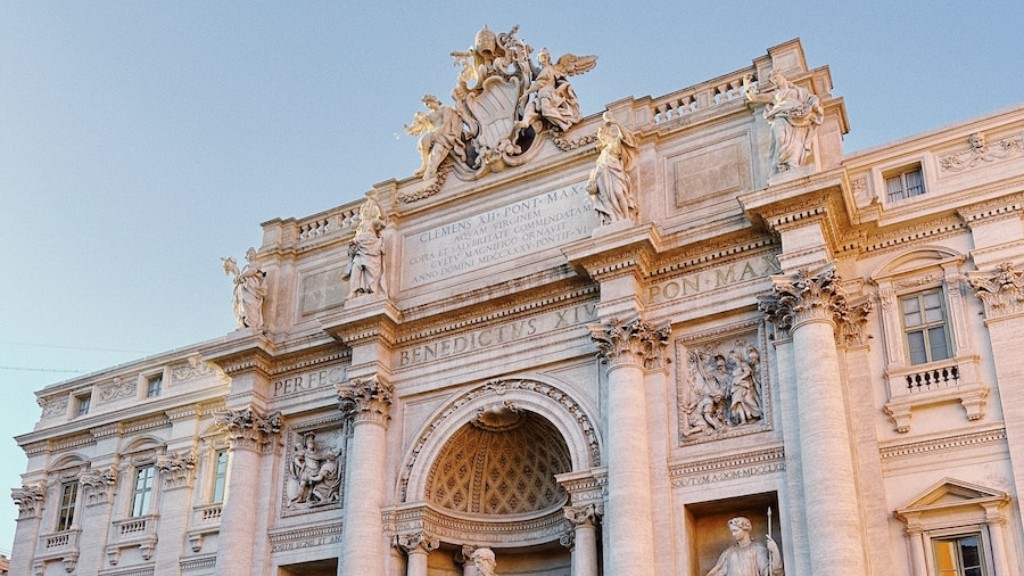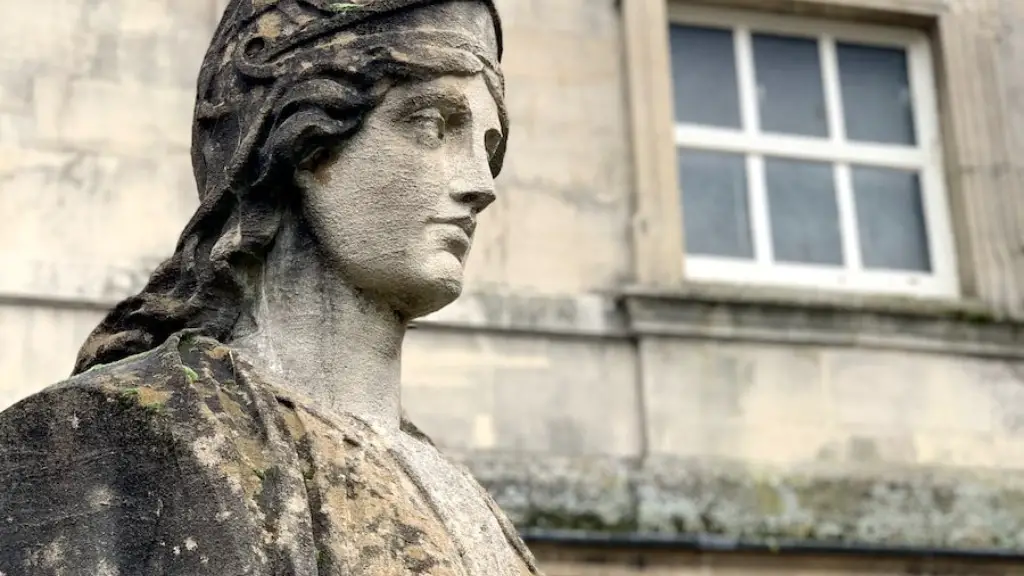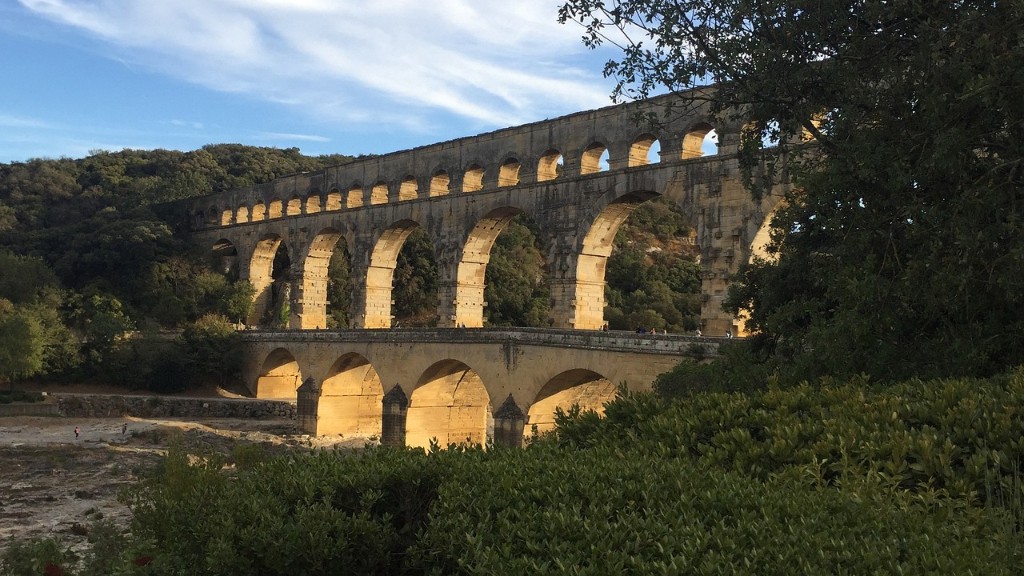The Ancient Romans and Croatia
For centuries the Roman Empire was a powerful and influential force across Europe and the Mediterranean, making it an important and relevant feature of Europe’s history. Roman rule stretched from the River Rhine in the north to the Sahara desert in the south and included parts of modern day Croatia. Scholars have often puzzled over why Croatia makes an appearance in maps of the ancient Roman Empire, a fact that still confounds many due to the country’s current location on the Balkan peninsula.
The answer lies in Croatia being a part of the Roman province of Illyricum, whereby it acted as a buffer zone between the Roman Empire and other empires to its east. This is an extremely important position to defend as it contributed to the security and defensive strategies employed by the Romans. Illyricum was located in the presumed heartland of Croatia, where it served as a demarcation line and the starting point for Roman conquests.
Croatian people and the Roman Empire first started to interact with each other when Julius Caesar invaded in 49 BC. This was followed by the conquest of Dalmatia by Augustus and the expanding of the Roman Empire’s boundaries. During the 1st century BC, the Romans held large parts of Croatia as either part of Pannonia or Dalmatia. These regions, which are now located in modern-day Central and Southern Croatia, were occupied by Roman legions and municipalities.
The Romans were very active in Croatia during the first century BC. They built military bases, roads, bridges, and aqueducts across the country, paving the way for modern infrastructure. Furthermore, they also introduced their culture, beliefs, and laws to the indigenous Croatian people. This period of civilizational exchange has been described as the point of modern Croats’ “formation as a nation”. Consequently, marks of the ancient Roman tradition such as the Latin language (with some of its dialects still spoken in Croatian today) and Christian faith (the Roman Catholic Church is still prevalent in contemporary Croatia) are present throughout the country.
Despite Croatia being an integral piece of the map in maps of Ancient Rome, it is still a mystery as to why this region was deemed important. It is possible there is more to its inclusion than defensive strategies and maintaining order in the region; there may have been other economic and political factors that played a role. Whatever the reason, the significance of Croatia in the map of Ancient Rome remains one of Europe’s unsolved mysteries.
Roman Influence In Croatia
Roman influence in Croatia stretches back to antiquity, the Roman Republic influential in its development and growth until the decline of the Roman Empire in 476 AD. Many aspects of Roman life lived on in Croatia, even after their decline, and their influence is still visible in many parts of Croatia even today.
The most obvious Roman influence in Croatia is visible in the two largest cities in the country, Zagreb and Split, both of which date back to Roman times. Zagreb was originally founded as a Roman military camp in the 1st century AD, while Split was founded by the Emperor Diocletian and was inhabited primarily by Roman soldiers. Similarly evidence of Roman architecture can be seen all across the country, particularly in the numerous Roman villas and other accompanying architectural finds.
Roman art and culture have also had a lasting influence in Croatia. Various relics from the time of the Roman Empire can be found in museums throughout Croatia, many of them from Dalmatia, a province of the Roman Empire which encompassed much of modern-day Croatia. Examples of Roman artifacts include various coins, sculptures, and even mosaics.
The most enduring example of Roman influence in Croatia is undoubtedly the language. Although the Roman Empire fell many centuries ago, Latin is still the official language in Croatia, with the Croatian version of Latin, known as “Croatian Glagolitic”, having been used by numerous authors and scholars over the centuries. It is in fact the closest living language to Latin and is a valuable regional language that helps preserve the historical heritage of Croatia.
Croatian Resistance to Roman Rule
Although the Roman Empire had a substantial influence on Croatia, they did not always receive willing assent from its inhabitants. Croatia was not an easy target for Roman domination, with numerous rebellions by the local population over the years. In the Republic of Croatia’s brief but distinguished history, there can be no question that Roman rule was fiercely resisted by the native population.
Perhaps the most notorious rebellion all came about in 6 AD when the local Illyrian tribes, led by their leader Bato the Breuss, formed an alliance and rose up against Roman forces. This uprising, known as the Pannonian revolt, lasted for four years and was fiercely fought by the Illyrians. In the end, the Romans were forced to retreat and the Pannonian revolt was considered to be one of the most successful revolts against Roman rule in history.
Later episodes of resistance against Roman rule included the Dalmatian Revolt of the 4th century AD and the brief but fierce rebellion of the Croat tribes of the 9th and 10th centuries, who resisted Roman rule for more than fifty years. All of these revolts attest to the fierce independent spirit of the Croatian people and their determination to uphold their sovereignty, no matter what the cost might be.
Roman Cultural Influence in Croatia
The influence of Roman culture on the culture of modern-day Croatia is undeniable, and one can see this influence in many different aspects of Croatian life. The most obvious examples can be found in the language, as many words and phrases used in contemporary Croatian are of Latin origin, as well as the fact that Latin is still spoken in some parts of Croatia.
Croatian cuisine still has many Roman influences, thanks to the introduction of numerous dishes and ingredients during Roman rule. Many of the traditional dishes found in modern-day Croatia, such as prosciutto, pasta, and pizza all have their roots in Roman cuisine.
Roman religious beliefs have managed to remain strong in Croatia, being passed down over the centuries. Christianity remains the predominant religion, although many people still practice various pagan and pre-Christian beliefs and rituals. This is largely due to Rome’s introduction of Christianity to the region.
Roman architecture can also be seen in Croatia, with many churches and other prominent buildings built in Roman style. One of the most striking examples is the Diocletian Palace in Split, which was built by the Roman emperor of the same name in the 4th century AD. This remarkable structure is now a UNESCO World Heritage Site and remains one of Croatia’s most iconic attractions.
Croatian Legacy From The Roman Empire
The legacy of the Roman Empire in Croatia is an undeniable fact, its influence still seen in many aspects of the country’s culture and its influence may even extend beyond that.
In terms of its geography, Croatia has been shaped by its history under the Roman Empire. Its location, jutting out into the Adriatic Sea and its mountainous borders, are likely a result of its strategic importance as a buffer state between the Roman Empire and its adversaries.
Likewise, the geographical divisions of Croatia today can also be attributed to the Roman’s divide and conquer tactics, with many of the current administrative divisions following the lines of the former Roman provinces of Dalmatia and Pannonia.
On a cultural level, the influence of Romans has been instrumental in shaping modern-day identity of the Croatian people. The Croatian language, religion, and cuisine have all been shaped by their history under the Roman Empire, and its legacy can also be seen in many aspects of Croatian society such as its politics, economy, and social mores.
Landscape of Croatia
The landscape of Croatia is a testament to its historical affiliation with the Roman Empire. The terrain of the country is divided into a series of distinct geographical regions, each of which has been greatly impacted by the Roman Empire’s various campaigns and conquests.
Croatia’s coastline has been a major center of Roman naval activity, particularly in the region around Split, which was once an important port in the Roman Empire’s trade network. Numerous Roman settlements can be found along Croatia’s numerous islands, such as Hvar, Mljet and Vis, which were all crucial additions to the Roman navy’s presence in the Mediterranean Sea.
The central region of Croatia is dominated by the mountain ranges of the Balkans, with the spectacular mountain ranges of the Dinaric Alps traversing the region. The Romans were active in this region as well, with many of their roads and bridges still visible in the area, such as the incredible Roman bridge in Trogir, which was built in the 2nd century AD.
Finally, the plains of Pannonia and the regions of Slavonia and inland Dalmatia remain largely untouched, as an enduring testament to the power of the Roman Empire, as many of its settlements and military posts have survived the test of time.
